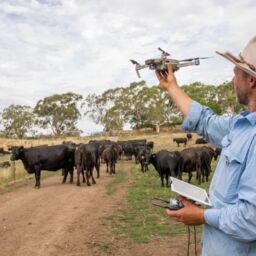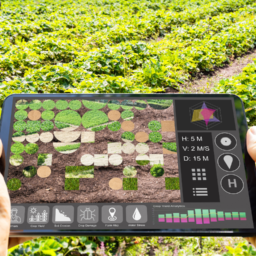
OPINION – Thomas Hall, Agtech and Logistics Hub Director
The face of agriculture is changing.
The average Aussie farmer is becoming more educated and tech-savvy as the sector undergoes a digital revolution.
Gone are the days when agriculture was purely a domain for blue collar workers. A growing number of white-collar jobs are sprouting from farm gate to plate as the sector becomes increasingly digital.
Agribusinesses are shifting from labour-intensive operations to more automated and data-driven environments, which is resulting in a swathe of new jobs.
The sector is suffering a skills shortage not just the result of the tight labour market, but also the result of the new skills required for emerging roles in agriculture.
Commercial farms need workers with skills in IT, programming, data analytics and engineering as automated machinery and devices, such as drones and robots, reduce the number of people needed out in the paddock.
These operations will need to rethink their organisational structures, including where jobs need to be based to ensure they get the right workers.
It’s estimated there are at least 242,000 people working in Australia’s agriculture sector.
The Australian Industry Skills Committee reports this number will rise to 315,800 by 2025 as the sector powers towards a goal of increasing its farm gate output to $100 billion by 2030.
Over the next decade 41 per cent of jobs in agriculture will be transformed through the impact of technology, according to modelling by analytics company Faethm. An estimated 31 per cent will be transformed through automation, and the remaining 11 per cent through augmentation such as Artificial Intelligence (AI).
They are huge predictions that come amid a skills shortage that is being compounded by great educational challenges in the sector.
While the number of agriculture workers with post-secondary qualifications has increased substantially in recent decades, there simply aren’t enough graduates.
A report released this year found that there are six jobs for every agriculture graduate.
There is simply a severe lack of kids coming through school and university who want careers in agriculture.
So how do we address this?
We need to make sure we are feeding young people the right information about agriculture.
We must get them excited about the exciting and diverse opportunities in the sector, promoting it as a place to forge a long and rewarding career.
We also need to ensure they understand farming is much more than hard labour in a paddock; that they can flex their computer, engineering, and science skills to operate and make the most of cutting-edge technology to improve productivity and profitability.
Indeed, the face and dynamics of agriculture are changing but this must be better communicated as the success of our industry – including reaching that $100 billion farm gate value goal – relies on attracting a bigger crop of young people.
This piece was originally published in the February edition of Queensland Farmer Today





